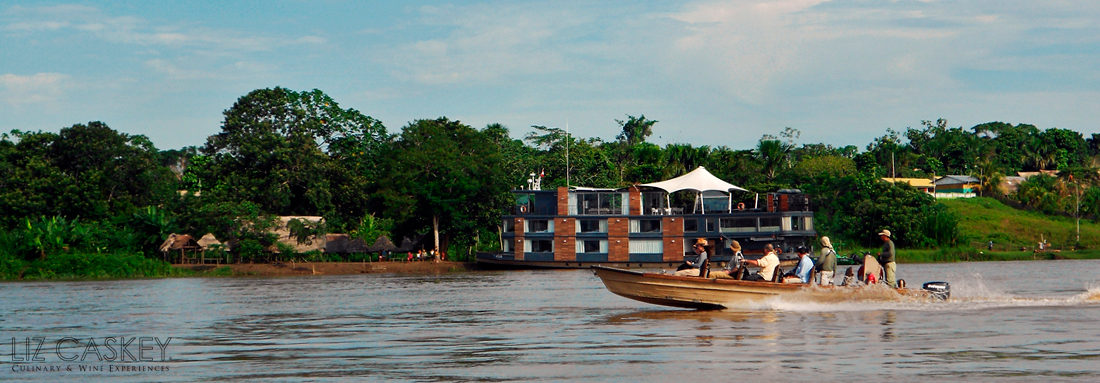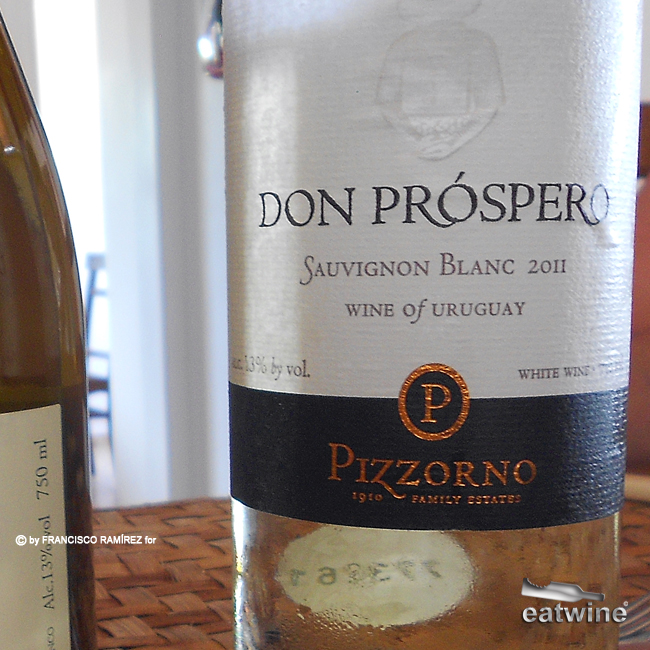Think that Uruguay is all about Tannat? Only Reds? Think again. This summer, we sipped away on astoundingly good local whites while traveling in country from everybody’s favorite zinger, Sauvignon Blanc, to some quirky ones like Albariño and Sauvignon Gris. Keep your eye on Uruguay. It may be small but the wine quality and diversity is quite a powerhouse. This is only the tip of the barrel…
Garzón Albariño
This could go down as our favorite white wine this summer. We loved it both for its simple, straight forward, easy drinking nature and the price point (at US$12, can you really go wrong?). Slightly floral on the nose, almost reminiscent of a Viognier, with subtle notes of sweet white peaches this wine sly. In the mouth, it kicks with pushy acidity, mineral notes, and a little citrus. I liked the creamy texture paired with the acidity and never got bored pairing it with grilled chipirones, baby squid.
Bouza Albariño
This wine has become somewhat of a “cult” wine. An albariño? Really? It’s all about supply and demand. Made from small parcels in their Canelones vineyard, Bouza was the first to import and experiment with this humble grape from Galicia, Spain. Fittingly, the weather is similar and the results were–beyond what anyone expected. It became a hit and everybody wanted it. This has got intense floral aromas and the presence of honeyed pears backed by citrusy notes. In the mouth, the acid is striking and it lingers just long enough. I pair this with anything from arugula and pumpkin salad to scallops gratin. This is imported now to the US. Rejoice!
Casa Figuera Sauvignon Gris
I heart this quirky little wine. If you’re in Uruguay and find it in a wine shop, on a menu, order it and remember me. They only make a couple thousand bottles. Please try it. Sauvignon Gris is a mutation of Sauvignon Blanc hailing from central and southwest France. However, since this is partially aged in barrels, the aromas and body change considerably to yield a rounder, richer wine. Thus, in my opinion, it pairs with more foods and even meat. On the nose, this wine has tropical fruit notes like guava and grapefruit. In the mouth, there is a hint of the barrel but it’s well integrated. The acidity is bright, it has a great mout feel and holds on just long enough. It feels like a bright wine bursting of vitality. It pairs extraordinarily well with fatty fish like salmon or tuna, rabbit, smoked meats, and roasted veggie dishes. If you want a fun experiment, try it with lemon ice cream and then write me.
Juanicó Atlántico Sur Sauvignon Blanc
Thank you. THANK YOU. Reason number 27 why I love Uruguayan wines. The low alcohol content more on par with European wines. This wine barely tips over 12%. In a region where you get used to being slapped by 14-15% alcohol, this is like sending your palate, and liver, on vacation (or maybe that would be rehab for the latter). This is a new Single Vineyard reserve line from Juanicó, one of the pioneer wineries in Uruguay. The nose is very, very aromatic with notes of grass, green tomatoes, lemon, and even cherimoya (custard apple). In the mouth, while there is good acidity, it didn’t leave me blinded like some of the Chilean cousins (trade off in lesser alcohol though), but it was well balanced. It’s tasty but lasts about 4 seconds and then you think, where did my wine go? And sip again. It’s a nice little song albeit short. Just hit play again.
Pizzorno Don Próspero Sauvignon Blanc
This Sauvignon Blanc is dry as a bone. Yay! Pale, straw in color it has strong aromatics that grab your nostrils like lemon, peaches, and very faint tropical fruit. The acidity of this wine is fresh, fresh, fresh and you could easily drink liters of it while nibbling on sushi (as we did one evening at Kokoro, the only real Japanese food in Montevideo). The body has good structure, nice acid, and is well balanced. It makes your mouth water, the acid test for any Sauvignon Blanc. I love the price point on this wine (to the tune of US$20 in restaurants), plus you can easily find it throughout Uruguay on many menus. Tried and true.














